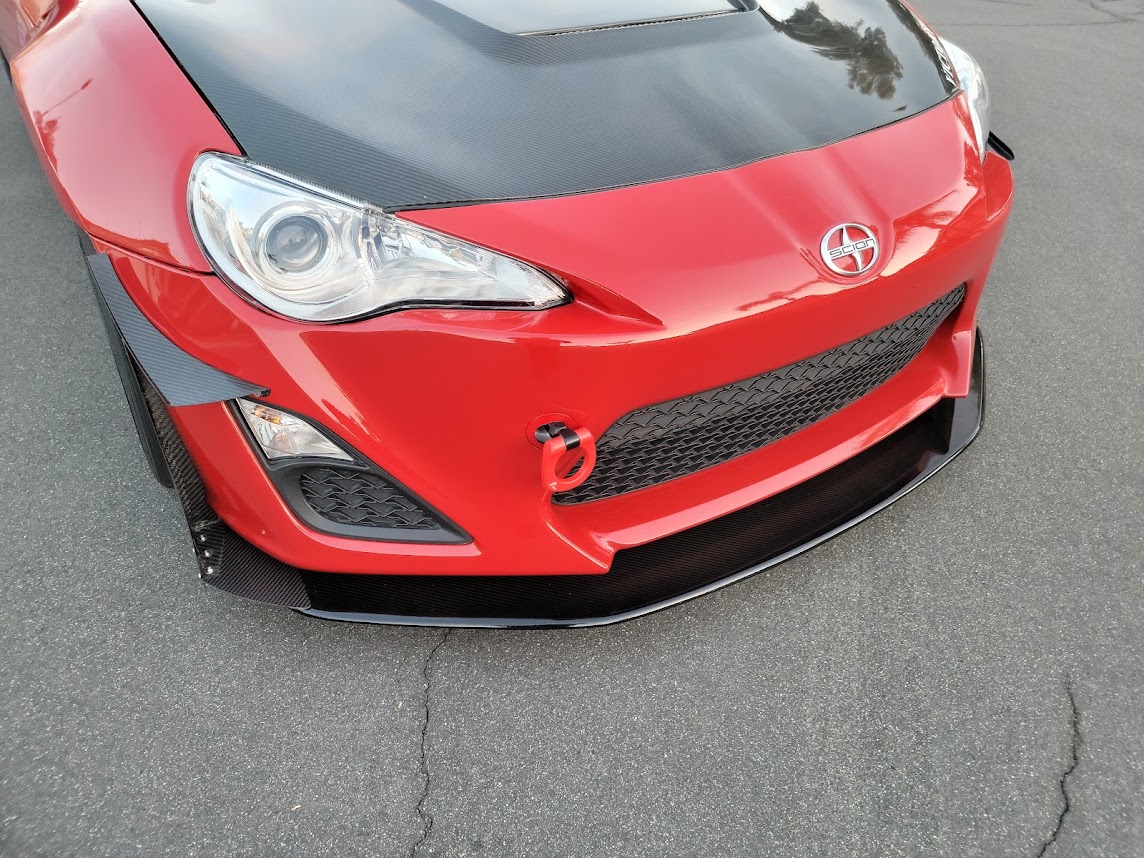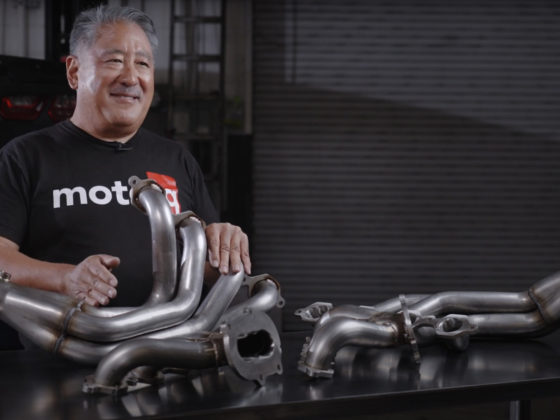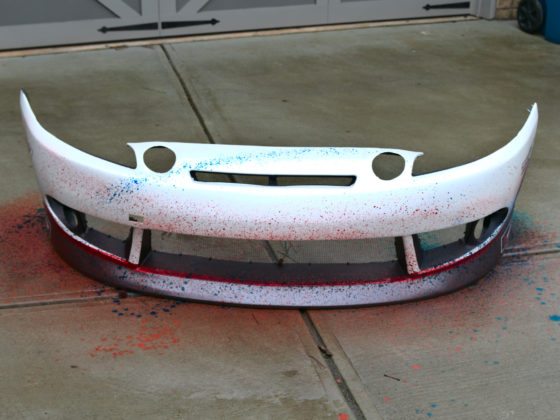
When driving Project FR-S on the track we had noticed that although the car had excellent handling in general, it had understeer in high-speed turns. We also noticed in pictures of the car traveling at high speeds that the back of the car was squatting down. We reduced the squatting by upping the spring rates when we upgraded the suspension with Wisefab and we also trimmed out our Cognition rear wing by drilling some new adjustment holes so we could run it at zero angle. We also decided to add some CFD-designed Aero parts to the front of the car to help add more front downforce from Verus Engineering and Victory Function. As a note, everything we are doing here also fits the Toyota 86 and the Subaru BRZ.

Project FR-S running at Buttonwillow. You could feel the aero-induced high-speed understeer around Talledega after the Bustop. The back of the car was firmly planted but the front would start sliding off line and you would have to reduce throttle. You could also feel this at turn 2 at Willow springs.

Our front end already had some aero aids. We had a sturdy splitter by Brian Kono at Afterhours Automotive. It was a good height from the ground at about 3.5″ and its interface to the front bumper was well sealed. We also had bullnosed front fenders from Victory Function that reduced some of the pressure in the front wheelwells by getting rid of entrapped air at the back of the wheelwell and reduced some of the front tires pumping action through the open backside.

To further improve the air handling, we added some of Victory Functions’ carbon fiber blades or air guides to the rear of the wheel well. These help by guiding the air curling off the front of the car and allowing the fender cutouts to act more like fender vents. This helps reduce wheelwell pressure more and also reduces drag in this area.

Our fenders were drilled to allow attaching riv-nuts to the underside of the fender crease.




6 comments
Those wheel well deflectors are interesting. I often see people adding a splitter ramp in that area. Those two things seem like they would have the opposite effects. Any reason to use one vs. the other?
Better to use both but I didn’t want to cut up the bumper to do it.
The fender blades look gtr’ish, no? Something I’ve always wondered about carbon fiber is this. Back in the 80s all bikes with aluminium frames we’re bare aluminum to show it off. After some time, the manufacturers painted the frames as people just knew most performance bikes were aluminum framed. When do you think this will happen to cf?
Awesome content as always
WHELL WELL AIR DEFLECTORS! For years I have been wondering what those are and what they do. I bought an E36 M3 years back that came with those from the factory and one had been ripped off sometime before I bought the car. No matter what I typed into google, I could never figure out what they are for. Thank you so much for answering this long nagging question of mine.
These are significantly important low buck mods that should be done before any dramatic aero is done. It’s interesting how much the sound of the vehicle at high speed changes, with these slats, blades, and flaps installed.
On older cars, I always make a point to install slats ahead of tires and wheel wells, but they do easily get ripped off, usually by an aggressive speed bump.
The most modern bumpers create ‘air curtains’ around the tires, but of course, that requires a specific type of ‘nozzle’ and ducting which is very difficult to retrofit onto older vehicles.
From what I know about most canards, it’s the way the vortex interacts with the turbulence coming from the tire and the wheel well that makes them effective. When they are attached to a splitter the vortex can act like a ‘virtual’ side skirt and prevent air from coming under the car disturbing the flow on a flat floor. Sometimes you will see them blended into the bodywork ahead of the rear wheel well, too, to keep a rear diffuser functioning. Ferrari does this on some of their cars.
Of course, if you can capitalize off of any CFD done on your specific car shape, or wind tunnel time, that would be ideal.
I kind of wish manufacturers would release that data to the public so people could be more informed when they do modifications, but I won’t hold my breath waiting for that to happen. Fortunately, the GR86 is popular enough that you can use that CFD data as a good reference.
All this stuff is what makes me think that the era of the HUGE REAR WING is finally over. I have always thought that a really nice duckbill rear spoiler with a rear diffuser just looks so much better while generating enough downforce for a road car.
A wing is way more effective than a duck bill that might live in a separated or partially separated flow.